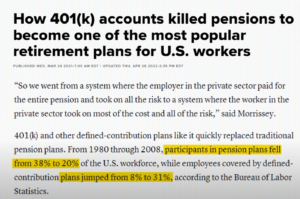Retiring Baby Boomer Considerations
As baby boomers approach retirement, many are faced with important decisions about how to manage and grow their savings to ensure financial stability throughout their retirement years. Traditionally, retirement portfolios have been built around a mix of stocks, bonds, and fixed-income investments, but in recent years, alternative investments, such as multifamily rental properties, have become an increasingly popular choice. These investments offer a potential hedge against inflation, steady cash flow, and long-term wealth generation. However, the decision to invest in multifamily rentals—like any alternative investment—requires careful consideration and due diligence to ensure a sound investment.
Traditional Investment Approach
 The stock market, bonds, and fixed-income securities are still widely used in retirement portfolios because they provide liquidity, diversification, and relatively predictable returns. Stocks have the potential for significant long-term growth, though they come with higher volatility, while bonds and fixed-income investments offer more stability and can provide consistent income through interest payments. While these investments are important components of many retirement strategies, they may not be enough to support the income needs of retirees, especially as inflation erodes purchasing power. This is where alternative investments, such as multifamily rental properties, come into play.
The stock market, bonds, and fixed-income securities are still widely used in retirement portfolios because they provide liquidity, diversification, and relatively predictable returns. Stocks have the potential for significant long-term growth, though they come with higher volatility, while bonds and fixed-income investments offer more stability and can provide consistent income through interest payments. While these investments are important components of many retirement strategies, they may not be enough to support the income needs of retirees, especially as inflation erodes purchasing power. This is where alternative investments, such as multifamily rental properties, come into play.
Alternative Real Estate Options
Multifamily properties are often seen as a more tangible and stable investment, offering both immediate cash flow from rental income and long-term appreciation in property value. In addition, owning multifamily real estate can provide tax benefits and a level of portfolio diversification that isn’t tied directly to the stock market’s performance. However, multifamily real estate investment is not without risks, and careful multifamily due diligence is required to ensure the investment aligns with retirement goals.

The due diligence process for investing in multifamily rental properties involves several key steps. First, an investor must evaluate the property’s location, which is one of the most important factors in determining its future value and rental income potential. A prime location near essential services, transportation hubs, and desirable neighborhoods typically leads to higher occupancy rates and more reliable rental income. Conducting thorough research on the neighborhood’s crime rates, school districts, and future development plans is essential to ensure the property will continue to attract tenants.
Due Diligence Is Paramount
 Next, a detailed financial analysis of the property is required. This includes reviewing current rent rolls, operating expenses, and any potential improvements needed to increase the property’s value or rental income. An investor must evaluate the property’s net operating income (NOI), which is the total income minus operating expenses, to determine the property’s profitability. It’s also important to calculate the capitalization rate (cap rate), which helps assess the return on investment based on the property’s income relative to its price. Ensuring that the property is priced appropriately and that it can generate positive cash flow is essential before moving forward with the investment.
Next, a detailed financial analysis of the property is required. This includes reviewing current rent rolls, operating expenses, and any potential improvements needed to increase the property’s value or rental income. An investor must evaluate the property’s net operating income (NOI), which is the total income minus operating expenses, to determine the property’s profitability. It’s also important to calculate the capitalization rate (cap rate), which helps assess the return on investment based on the property’s income relative to its price. Ensuring that the property is priced appropriately and that it can generate positive cash flow is essential before moving forward with the investment.
Another critical aspect of multifamily due diligence is reviewing the property’s physical condition. An inspection should be conducted to assess the structural integrity, condition of major systems (HVAC, plumbing, electrical), and any necessary repairs or renovations. This is particularly important for older properties, as deferred maintenance can be costly and affect the property’s profitability. A thorough inspection, along with estimates for any repairs or upgrades, will provide a clearer picture of the overall investment costs.
Finally, legal considerations should not be overlooked. Reviewing tenant leases, zoning laws, and property titles ensures that there are no legal complications associated with the property. Additionally, it is important to assess the local rental market regulations, as some areas may have rent control or other restrictions that could impact rental income and profitability.
Alternative investments such as multifamily rental properties can offer significant benefits for baby boomers looking to secure a steady income stream during retirement. However, these investments come with their own set of risks and require careful due diligence to mitigate potential issues. By evaluating the property’s location, finances, physical condition, and legal standing, investors can make more informed decisions that align with their long-term retirement goals.